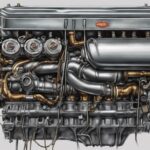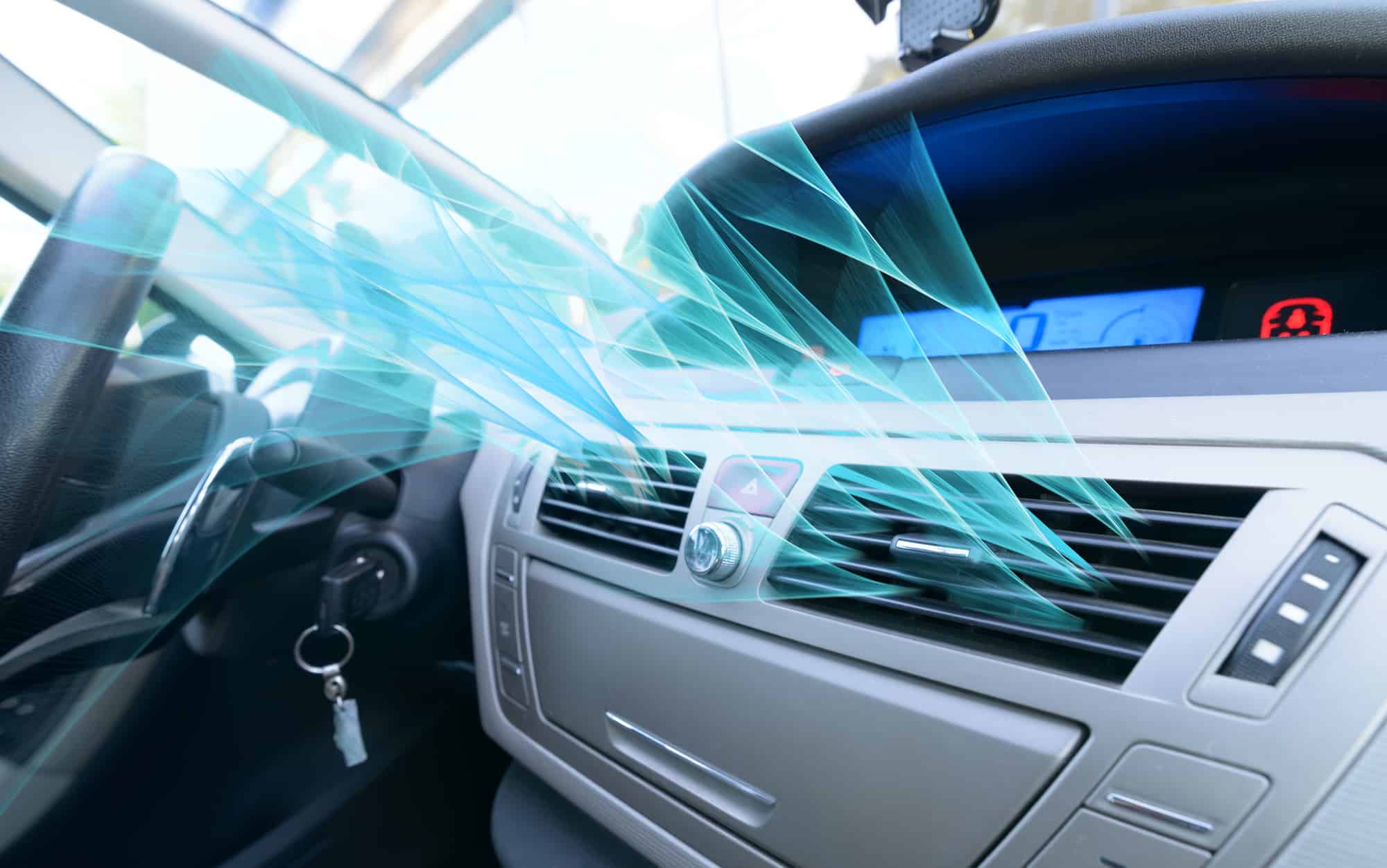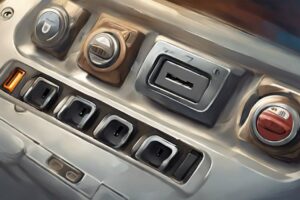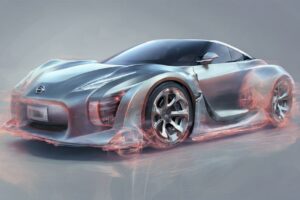In most cars, the heat that you get inside the car actually comes from the engine. Heat is transferred to the cabin of your car via engine coolant flowing through the heater core.
If the car is running hot but the heater is blowing cold then there is usually a problem with one or more parts of the engine cooling system. The fault could be caused by a bad heater core, a faulty blower motor, low engine coolant levels, or even a faulty coolant thermostat.
Why is my car running hot but the heater blowing cold air (6 Reasons)?
It’s important to get to the bottom of problems with the cooling system before they get too bad. If the engine is allowed to overheat, then this could cause expensive damage to the engine.
Here a few common reasons why your car heater is blowing cold air even after the engine has heated up.
Reason 1: faulty heater blower motor
A faulty heater blower motor is a common reason for the heater in your car blowing cold air or not blowing air at all. When the blower motor is working properly it sucks air into the climate control system via the cabin filter. If you’ve got the heating turned up in your car then this air then passes through the heater core where it is heated by the hot engine coolant.
If the blower motor is not working or is only turning slowly then the amount of air entering the heater core and coming out through the air vents will be significantly reduced.
It’s not uncommon for heater blower motors to burn out, especially if you don’t change the cabin filter regularly. The can also fail if the heater motor relay fails or if there is a problem with the wiring or fuse feeding the motor.
Reason 2: Bad heater core
The heater core is responsible for heating the air that is sucked into the climate control system by the blower motor. It is part of the engine coolant system and basically works like a small radiator behind the dashboard. If it is not working properly then the air coming from the vents will be cold.
The heater core can fail in a number of ways. One of the main reasons for heater core failure is a build-up of dirt in the coolant system that blocks the heater core feeder pipes. This is primarily caused by not changing the engine coolant when necessary.
Old coolant will lose its rust-inhibiting abilities causing dirt and metal particles to build up in the coolant as it is pumped around the engine.
Another reason a heater core can fail is due to lack of use. In most cars, coolant will only flow through the heater core when the heating is switched on. If you live in a warmer climate, or just don’t use the heating that much in your car, then the heater core is less likely to be used and could have coolant sitting in it for long periods of time.
Reason 3: faulty Engine Coolant thermostat
A faulty thermostat may block the flow of hot coolant to the heater core, stopping it from heating the air.
When the engine is cold, the thermostat should be closed. Cold coolant is kept circulating in the engine until the engine reaches a specified temperature at which point the thermostat opens, allowing coolant to flow through the engine radiator so that it can be cooled.
When you turn on the heat in your car, the coolant is also allowed to flow through the heater core and back to the engine. This is also controlled by the thermostat, and if the engine is not warmed up then the coolant does not flow through the heater core.
A faulty thermostat may block coolant from flowing through the heater core, no matter how hot the engine gets.
Reason 4 – low engine coolant
Coolant is needed to absorb heat from the engine and bring it to the radiator at the front of the car and to the heater core in the car. Low levels of engine coolant will mean that the heat from the engine won’t be transferred as effectively to the inside of the car.
If there is a coolant leak, or the coolant has not been topped up in a while, then there may not be enough coolant in the system for it to work effectively. This will also have an effect on the engine temperature.
Low coolant is a primary cause of engine overheating, and if the engine is running too hot then the coolant will be redirected to the radiator and away from the heater core. It will also trigger the cooling fan at the front of the radiator, which will cause a further cooling down of the coolant that is traveling to the heater core.
Reason 5 – Faulty cooling fan relay
The engine cooling fan is controlled by the ECU. When the engine temperature is too high, or if the flow of cold air to the radiator is not sufficient, then the ECU will activate the radiator fan via the cooling fan relay.
If the relay is faulty it can sometimes start to switch on and off the fan when it is not necessary. This can adversely affect the engine temperature causing it to run hot then cold. This has a knock on effect that causes coolant to loose too much heat, causing the thermostats to close when they would normally be open. If the thermostats are closed then coolant cannot get to the heater core and cannot provide warm air to the inside of the car.
Can a Flashing Check Engine Light Cause the Heater to Blow Cold in My Car?
Yes, a flashing check engine light can indicate a serious issue like a misfiring engine, which can lead to the heater blowing cold in your car. Common car shaking causes and solutions may include addressing issues with the ignition system, fuel system, or exhaust system to resolve the problem.
Reason 6 – Collapsed hose or coolant blockage
Another very common reason why coolant cannot freely travel to the heater core is because of a collapsed or blocked coolant hose.
The heater core uses the hot coolant from the engine to heat the air inside of the car. The heater core is usually connected to the engine coolant system via two hoses: a feeder hose that takes coolant from the engine and a return hose that takes coolant back to the engine.
If the feeder hose is damaged or partially blocked then this will affect the supply of hot coolant to the heater core.
Blocked or collapsed hoses elsewhere in the coolant system can also reduce the amount of coolant and the temperature of the coolant that reaches the heater core. Even if there is an adequate flow of coolant, if it is not hot enough then it can cause the heater to blow cold air.
What Next – Your Car is running hot but the heater is blowing cold air?
A heater that only blows cold air can be tricky to diagnose. There are many different things that can affect the temperature of the air coming from the air vents, and many of them are hidden away behind the dashboard where they are difficult to examine.
- Begin by checking the fuses. Refer to the vehicle handbook for instructions on how to check for a blown fuse. The heater blower motor will have a dedicated fuse that may have blown, replacing the fuse may fix the problem.
- Check to see if the heater blower motor is working. If the fuse is not blown, check that the blower motor itself is working. Turn on the engine and set the air conditioning fan speed to its highest setting. You should be able to hear the fan running behind the dashboard. On some vehicles, you can get access to the blower fan by removing the pollen filter. If this is possible then you may be able to visually inspect the blower fan to see if it is actually working.
- Check the engine coolant level. Make sure that there is enough coolant in the engine so that the heater core can be adequately supplied when the engine is running and up to temperature. If the coolant level is low, top it up using recommended fluid and run the engine for a while until the thermostat opens and starts supplying the heater core.
- Check for collapsed or damaged coolant hoses. Check the rubber coolant hoses for damage such as splits or holes. Make sure that all of the hoses are fully expanded with no blockages. It can be difficult to check the heater core feeder hoses without dismantling the dashboard, so you may only be able to check the engine coolant hoses.
- Run a diagnostic of the ECU for trouble codes. If there is a problem with the blower fan, the engine thermostats, or the electric auxiliary fan then a trouble code may be recorded in the ECU. Common auxiliary fan codes include P0480, P0481, and P0695. Other cooling system codes that you may come across include P2181, P0115, P0116, and P0117.











I’ve been noticing my car running hot recently, and at the same time, my heater has been blowing cold air, which is really uncomfortable, especially in the colder months. I’m not sure what the root cause is. How can I check if the issue is with the thermostat without having professional tools?
Would checking my car’s heater blower motor require any special tools or skills?